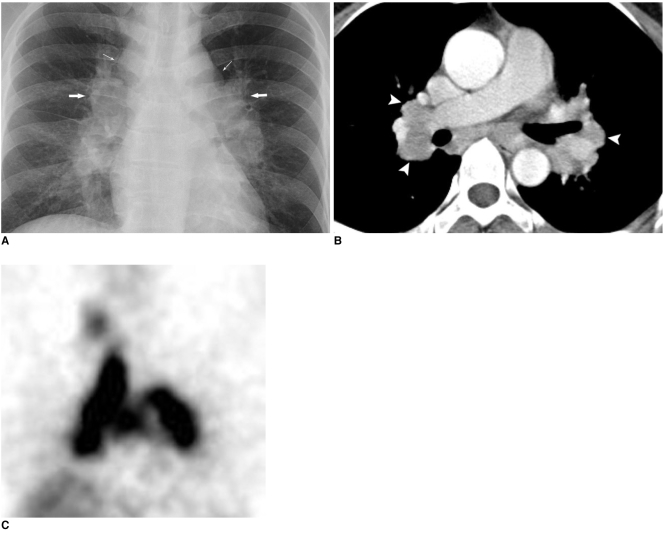Fig. 1.
Esophageal and genital leiomyomatosis
A. Huge abnormal increased 18F-FDG uptake lesion (arrows) in esophagus (maximal SUV: 3.8) noted on PET/CT image (upper row). Corresponding contrast enhanced CT images demonstrate abnormal mass lesions in each organ.
B. Hypermetabolic lesions (arrows) were evident in pelvic region including uterus (maximal SUV: 6.13) (middle row).
C. Hypermetabolic lesions (arrows) were evident in vulvar region (maximal SUV: 2.81) (lower row).
D. Arrows point to lesions evident in on PET.
E-J. Pathologic examination. Grossly, 13 cm (length)×8 cm (width)×6 cm (depth) poorly circumscribed, sausage-like, white/pink, firm muscular mass oriented across distal esophagus and gastric cardia was evident. Diffusely thickened esophageal wall measured 2 cm in maximal thickness (E). Histologically, Hematoxylin & Eosin staining (×40 in panel F, ×200 in panel G) reveals characteristics of leiomyoma. Multiple confluent well-differentiated smooth muscle proliferations were evident. Cells formed fascicles and interlacing bundles without cytologic atypia. Immunostaining for smooth-muscle actin (×40) was strongly positive in smooth-muscle origin tumor cells with control reaction of microvillous projections in apical cell membrane (H). Uterus lesion also demonstrates as leiomyoma pattern in Hematoxylin & Eosin staining (×100 in panel I, ×400 in panel J).

